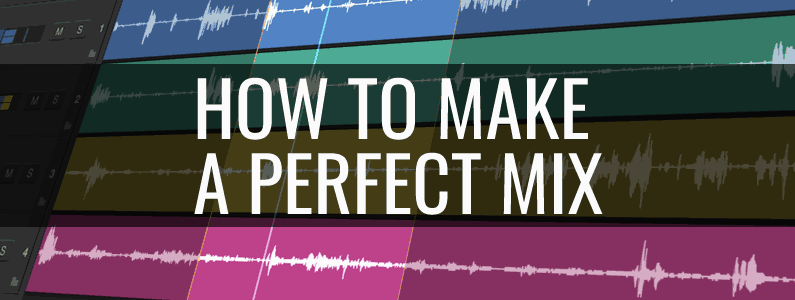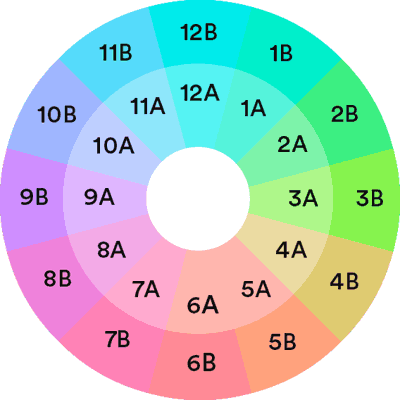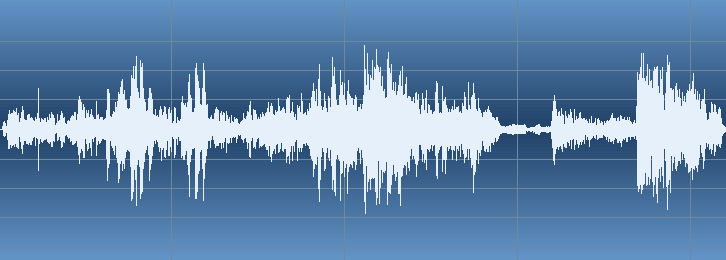
The music flow in the club never stops for a second. One track flows smoothly into another, the rhythm becomes your pulse, and the melody the breath of the night. This is how a good mix works. It doesn’t just connect songs, it creates a sense of continuity, movement, emotion.
If you're just starting out as a DJ or producer, and you want to learn how to make the same smooth transitions, then this article is for you. I'll tell you everything from the beginning - without complicated terms, without professional jargon. Just practice, advice from those who have been doing this for years, and a bit of theory, which is really important.
1 Where to start? Understanding what a mix is
A mix is not just about running two tracks at the same time. It is the art of combining different elements so that they work together to create a whole. A good mix doesn't just sound smooth - it captures, leads, and supports interest and energy.
When I first started, I thought it was enough to just put beats together and everything would work out. But alas, it wasn’t enough. Tempo, key and energy are the basics that every DJ needs to master. Without them, even the coolest tracks can sound like two cars trying to drive in the same lane – noisy, ugly, and with the risk of a collision.
So let's figure out the main components of a good mix.
2 Tempo: the basis of everything
Tempo is the speed at which music is played and is measured in beats per minute (BPM). And if you want one track to smoothly transition into another, their pace should be about the same.
Why is this important?
Because the human ear feels the rhythm. If one track is at 128 BPM and the next is at 135, then the transition will feel like everything has started to stumble. That is, you can do it technically, but the listeners will feel uncomfortable.
Nowadays, almost all programs and DJ software can automatically detect BPM. Tools like Serato, Traktor, Rekordbox show the exact tempo in real time. But don't completely trust them 100%. Sometimes algorithms make mistakes, especially with live recordings or less popular genres.
My personal advice is to always check the tempo manually. Just tap with your foot or hand to the beat and count how many strokes occur in 15 seconds. Multiply by 4 and you get an approximate BPM.
Interesting fact: most modern dance tracks are in the range of 125-130 BPM. And this is not accidental, because this tempo perfectly matches the average heartbeat of a person during active movement.
3 What sounds right: working with keys
If tempo is responsible for rhythm, then harmony is the key. Each track is written in a certain key, and if you just take two songs of different keys and start mixing them, you might not get a "flow", but a "clash".
Imagine that you are talking to a friend, and suddenly he starts using words from a completely different language. Will you understand him? Maybe. But will it be comfortable? Unlikely.

That's why it's important to understand which tracks go together in keys. To do this, use a system called the Camelot Wheel, which is a circle of key signatures. It helps you quickly understand which keys go together best.
For example, if you play in 8B, then the next track can be played in 9B (up), 7B (down), or even in 8A (parallel major key). It gives you space to experiment, while maintaining a musical connection.
I thought I could just mix by beat. I tried mixing by key for the first time and it was like someone added oil to the engine.
Previously, before the advent of programs such as Mixed In Key or tuneXplorer, we selected suitable tracks by ear. It took longer, but it developed my musical flair.
4 Energy: a sense of movement
If the pace is the wheels, and the key is the engine, then the energy is the gas tank. It is responsible for the level of intensity, sound density, and detail saturation.
One track can be slow but very intense, like a drum and bass track with lots of drums and subwoofers. The other one is faster, but more airy, with a minimalistic arrangement. When moving from one to the other, you have to consider this point.
Good mixes are based on a smooth change in energy levels. You start with softer tracks, then you raise the tension, reach a peak, and lower it again - as in any correct story.
Personally, I always pay attention to:
- Which instruments dominate each track
- Do they have build-ups, drops, or pauses?
- How does the sound density change over the course of a composition?
These things affect perception. And if you don't take them into account, then even the cleanest mix may seem flat or tiring.
5 How to choose tracks for a mix?
Choosing tracks is like making a menu in a restaurant. You want each course to be delicious on its own, but at the same time it is logical to continue the previous one.

Features of tuneXplorer
- Accurately finds the musical key and tempo
- State-of-the-art audio analysis algorithm
- High scalability and performance
- Saving key and tempo in metadata
- Support for all popular audio formats
My method: I listen to several tracks in a row without playing them at the same time. I just imagine how they will interact. Sometimes it's enough to imagine how one bass pattern flows into another, and you already know whether something beautiful will turn out or not.
One more tip: make playlists with notes - where are the keys, how many BPM, what energy level. This will help you assemble the set faster when you're on stage.
6 Transitions: fades, crossfades, loops
Now that you've selected a couple of suitable tracks, it's time to think about how to combine them.
The most common method is fading, when the first track gradually fades away, and the second one increases. But the real magic begins when you use crossfades and synchronize drops - places where there is a break, an accent, or a drastic change in sound.
You can use low-pass and high-pass filters that allow you to "introduce" a new track through frequencies, gradually opening up the sound space. This creates the effect of a new world emerging from the old one.
Another life hack: if you see that there are similar elements at the end of the first track and at the beginning of the second (drums, synthesizer, vocal loops), you can simply "place" them to each other. It works like magic.
7 Track layout: not everyone can be first
As in the movies, it's important to put the accents right in the mix. You shouldn't immediately throw the most powerful track into the crowd. It's better to start with something soft, a warm opening part, followed by a gradual increase in tension and a climax.
Think about what kind of story you want to tell. Maybe you want people to get into a rhythm, or, on the contrary, immediately burst with energy?
In my first live mix, I made a mistake with that one. I started with a heavy drum end, and the audience froze. Everyone was waiting for something even steeper to start right now, but I didn't have time to prepare a smooth descent. After that, I always start with a light introduction so that people can "enter" the dance.
8 How to work with waves and visual information
Today we have waveforms that show what the sound looks like visually. They help us navigate where there are clicks, where there is bass, where there is silence.

I often look at these graphs to understand where the "hit" is, where you can make a transition, and where it is better to wait.
If you notice that one track has a lot of high frequencies at the end, and the second has heavy bass, you can make the first one disappear at the top, and the second one enters from the bottom. It turns out like a change of scenery in a theater - the viewer does not even notice how it all happened.
9 Tips that will really help
Don't mix at full volume. Listen at a mid-level to hear how everything interacts.
Use harmony, not just the beat. Keys are important too.
Learn from other people's mixes. Listen to how the pros work, analyze, try to repeat.
Check your mixes on different devices. What sounds perfect on headphones may lose depth on speakers.
Try different styles. This will expand your understanding of music and make your mixes more diverse.
Record your sets. This way you can analyze what worked and what didn't.
Don't be afraid to experiment. Sometimes the best mixes were born from what was supposed to fail on paper.
Be prepared for the fact that not everything will go smoothly. At a live performance, you are not always in control of the situation. The main thing is to get out of it beautifully.
10 Interesting facts you might not know
The human brain perceives music not only by ear, but also on an emotional level. That is, if you choose the right sequence, you can evoke certain feelings, memories, even associations in people.
DJ mixes became popular thanks to vinyl. People didn’t want the dance floor to slow down between tracks. So they started mixing to keep the rhythm.
The first DJ mixes appeared in the 1970s in New York nightclubs. Today, it’s not just a technique - it’s an art.
Energy is not only volume. It’s density, complexity, movement within a composition. Sometimes a quiet track can be more energetic than a loud one.
Harmonic mixing (mixing in keys) appeared relatively recently, but has become very popular among those who want to not just mix music, but create something whole.
11 Frequently asked questions from beginners
Do you need to know music theory to make a good mix?Not necessarily. You can start with practice, but the more you understand about keys, the easier it will be to create quality transitions.
Is it possible to mix tracks with different BPMs?Sure. This is called tempo mixing. But then you need to use loops, slow down/speed up the tracks so that everything comes together into a single picture.
Do I need to use special software?Yes, but it doesn't have to be expensive. Virtual DJ, Rekordbox, Serato - all of this is available and free if you're just starting out.
Why does my mix sound weird on the speakers, although it was perfect on headphones?Because headphones and speakers transmit sound differently. Bass, for example, is much clearer in headphones.
How do you know if a mix is successful?If you forget that you're mixing and start to feel as if one song is transitioning into another by itself, then you're on the right track.
12 Conclusion
Mixing music is like driving a car. At first, you think about speed, turns, signals. Then, after a couple of months, you don't think about the pedals anymore, you just go where you need to go.
Same here. At first, you'll look at the BPM, the keys, the energy. Over time, it will become intuitive. You'll hear how one track can "embrace" another, and understand how to make the sound not just go, but live.
So start small and work with a couple of tracks. Learn from your mistakes, memorize successful combinations. In a couple of weeks you will be surprised how you did not understand what a real flow is before.
